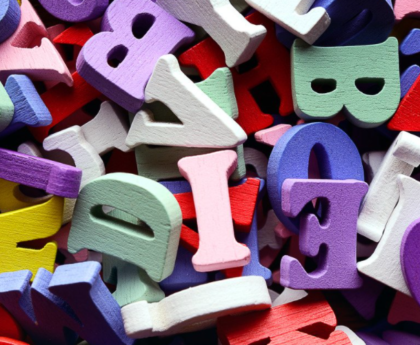Imagine a child staring at a giant puzzle, eager to put the pieces together but unsure where to start. Now, picture handing them a guide that shows how each piece connects, turning confusion into clarity. That’s what concept maps offer our early readers—a visual way to organize new information and build connections that make reading more meaningful and accessible. Concept maps guide children through the sometimes overwhelming process of learning to read by creating visual relationships between ideas, words, and concepts.
What Are Concept Maps and Why They Matter for Young Readers
Concept maps are visual organizers that help children structure information in ways that support comprehension and retention. For early readers specifically, these tools provide a bridge between isolated phonics skills and meaningful reading experiences.
Beginning readers need explicit instruction in phonemic awareness and phonics, but they also need ways to connect these building blocks into meaningful knowledge structures. Concept maps provide this crucial connection by allowing children to see how individual words relate to each other within broader categories and concepts.
Research from a meta-analysis by Schroeder et al. (2018) found that students who used concept maps showed significant improvement in knowledge retention compared to those using conventional study methods. More importantly for young readers, concept mapping activates multiple cognitive processes simultaneously. When a child creates or uses a concept map, they engage both verbal and visual processing centers in the brain, strengthening neural connections that support reading development.
For early readers still developing decoding skills, concept maps offer particular advantages:
- They reduce cognitive load by organizing information visually
- They provide context clues that support word recognition
- They reinforce vocabulary through categorization
- They build background knowledge essential for comprehension
- They support memory by creating visual associations with words
Parents of struggling readers often notice their children can decode individual words but struggle to comprehend what they’ve read. This disconnect happens because reading requires both bottom-up skills (decoding) and top-down processes (using knowledge to create meaning). Concept maps directly address this challenge by helping children organize what they know and connect new reading material to existing knowledge frameworks.
How to Create Effective Concept Maps with Early Readers
Creating concept maps with young readers should be a collaborative, multisensory experience that builds upon their current reading stage while stretching their abilities appropriately.
Start simple with a central concept that interests your child. For example, if your child loves animals, place “Animals” in the center of a piece of paper. From there, work together to add categories (land animals, water animals, flying animals) and then specific examples within each category. As you add each word, encourage your child to sound it out using their phonics knowledge.
For children just beginning to read, incorporate images alongside words. The visual representation supports word recognition while building vocabulary. As children progress, gradually rely less on images and more on text connections.
A particularly effective approach is to create concept maps before, during, and after reading a book. Before reading, map what your child already knows about the topic. During reading, pause to add new information to the map. After reading, review and reorganize the map to reflect new understandings.
Parents can enhance concept mapping by:
- Using color-coding to highlight different categories or types of information
- Adding movement by having children physically arrange word cards into concept groups
- Incorporating tactile elements like textured paper or dimensional objects
- Having children explain their concept maps out loud to help reinforce verbal connections
- Revisiting and expanding maps over time as reading skills grow
These multisensory approaches support the development of stronger neural pathways that contribute to reading fluency and comprehension.
Connect Concept Maps to the Five Essential Reading Skills
Concept mapping supports all five foundational reading skills identified by the Science of Reading, making it a powerful tool for comprehensive literacy development.
For phonemic awareness, concept maps can group words with similar sounds, helping children recognize patterns in spoken language. When creating a map about animals, for instance, you might group animals whose names start with the same sound.
For phonics development, concept maps can organize words by spelling patterns. A map about “long a” words might include categories for a-e, ai, and ay patterns, with example words in each category.
Fluency improves as children repeatedly encounter words in meaningful contexts. By revisiting concept maps regularly, children practice recognizing words automatically, freeing cognitive resources for comprehension.
Vocabulary expands naturally through concept mapping as children learn to categorize words and understand relationships between concepts. A study from the University of Pennsylvania found that elementary students who used concept mapping increased their vocabulary retention by 35% compared to traditional vocabulary instruction.
Finally, comprehension is enhanced as children build coherent knowledge structures. When reading about butterflies, for example, a child with a well-developed concept map about insects will more easily integrate new information into their existing knowledge framework.
Adapt Concept Maps for Struggling Readers
For children experiencing reading difficulties, concept maps can be particularly valuable intervention tools. They provide alternative pathways to understanding that don’t rely exclusively on text processing.
If your child struggles with decoding, try these concept map adaptations:
- Begin with oral concept mapping—discuss connections before writing anything down
- Use pictures, symbols, or color-coding instead of words for initial mapping
- Incorporate tactile elements like string to connect related concepts
- Record your child explaining connections verbally if writing is challenging
- Start with just 3-4 concepts and gradually expand
These modifications provide struggling readers with successful experiences while building the knowledge structures that will eventually support their reading development.
Digital Tools for Concept Mapping with Young Readers
While traditional paper-and-pencil concept maps are valuable, digital tools can add engagement and accessibility for today’s young readers. Several child-friendly concept mapping applications allow for:
- Adding voice recordings to explain connections
- Incorporating images from a digital library
- Easily reorganizing and editing as understanding grows
- Saving multiple versions to track progress over time
- Adding animations that demonstrate relationships
These digital supports can be particularly helpful for children who struggle with fine motor skills or who benefit from additional sensory input.
Concept Maps as Reading Foundations
Concept maps serve as powerful bridges between isolated reading skills and meaningful comprehension. For early readers, they provide visual frameworks that organize information, reinforce phonics skills, build vocabulary, and support comprehension—all while making the reading process more engaging and personal.
Remember that the goal isn’t to create perfect, comprehensive maps, but rather to engage in the process of making connections visible. The conversations you have while creating concept maps with your child may be even more valuable than the finished product.
Ready to transform your child’s reading experience with powerful visual learning tools? Download the Reading.com app today for a 7-day free trial and discover how our structured literacy approach incorporates visual learning strategies like concept mapping into systematic, engaging reading instruction.





